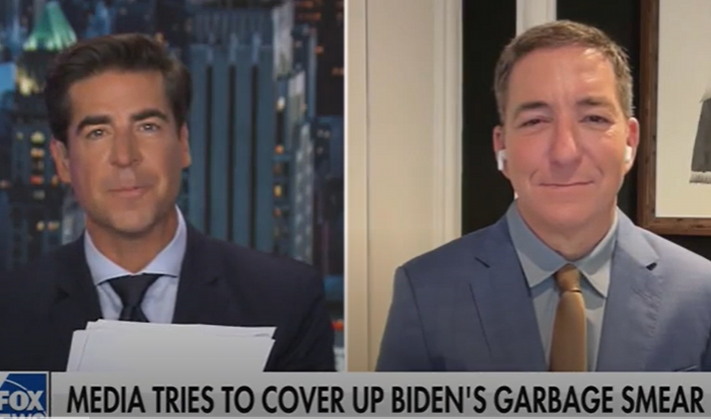Glenn Greenwald’s recent appearance on the Jesse Watters show highlights a growing concern regarding the declining influence of liberal media in the American political landscape, particularly in relation to their continuing narrative against former President Donald Trump. Greenwald asserts that this trend has been developing for years, and mainstream media’s repetitive characterization of Trump as a “fascist” or a “racist” is failing to resonate with a significant portion of the electorate. According to Greenwald, while the media has consistently attacked Trump, his support continues to swell, especially among minority voters, suggesting that the media’s portrayal is increasingly out of touch with reality. The media’s inability to alter public perception reveals a significant disconnect between their narratives and the experiences and opinions of many Americans.
The crux of Greenwald’s argument revolves around an anonymous TV executive’s assertion that a Trump victory would signal the end of mainstream media in its current form. Greenwald agrees, indicating that this realization has been overdue. Since Trump’s political emergence in 2016, the mainstream media’s narrative surrounding him has been overwhelmingly negative, predominantly branding him as a figure reminiscent of historical tyrannies. Despite this, Trump’s electoral resilience—illustrated by his victory in 2016 and a tightly contested 2020 election—indicates that a substantial portion of the population refutes the media’s characterizations. Greenwald illustrates that the media’s relentless critical stance towards Trump has not translated into diminished support for him, revealing a fundamental flaw in their approach.
Another vital point raised by Greenwald is the striking fact that a growing segment of non-White voters appears to be gravitating toward Trump, countering the media’s assertion that he represents White supremacy. This demographic shift challenges the narrative that the corporate media has been pushing and signals a significant change in voting patterns, particularly among groups traditionally associated with the Democratic Party. Greenwald indicates that this shift could reflect broader discontent with the current political climate and dissatisfaction with Democratic leadership. He interprets this development as evidence that no matter how pronounced the media’s attacks against Trump may be, they fail to alter the perspectives of those voters who are increasingly aligning themselves with him.
Moreover, recent polling data underscore Greenwald’s argument about the media’s diminishing sway. Trust in media organizations has reached unprecedented lows, with many Americans expressing skepticism towards their reporting. Greenwald argues that the media’s persistence in advancing the same leftist narratives—despite their evident ineffectiveness—reflects their ignorance of the changing sentiments among the populace. Instead of adjusting their coverage to reflect the realities experienced by voters, mainstream media continues to churn out old narratives that have increasingly less traction. Greenwald posits that this failure to adapt ultimately contributes to the media’s eroding influence.
The implications of Greenwald’s critique are substantial for both the media and the political sphere as a whole. If the mainstream media continues on its current trajectory, failing to engage with the realities and concerns of a diversified voter base, it risks alienating an even broader audience. Such alienation could lead to a reinforcing cycle wherein the media becomes further entrenched in its biases while the electorate seeks alternative sources of information that more accurately reflect their experiences and values. Furthermore, as more voters, particularly minorities, align themselves with Trump, the media may find itself facing not just a loss of influence, but also a complete re-evaluation of its role in American political discourse.
In conclusion, Glenn Greenwald’s insights into the failing influence of liberal media reflect a broader discontent within the electorate regarding traditional narrative structures. As both trust in media dwindles and diverging political allegiances become apparent, the ongoing political landscape may undergo significant transformations. Media organizations may need to rethink their strategies and engage more authentically with the electorate if they hope to reclaim any relevance in the evolving discourse around American politics. The growing support for Trump’s candidacy, even in light of relentless criticism, serves as a warning for media institutions that their current approaches may be leading to their own obsolescence.

